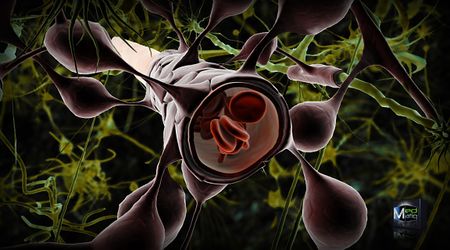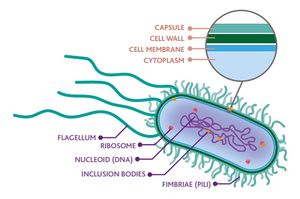It is a structure that is formed primarily due to the establishment of tight junctions between endothelial cells (i.e. cells that line the walls of blood vessels).The blood-brain barrier (BBB) surrounds most of the blood vessels in the brain.
- There are also several other cells and proteins contributing to the blood-brain barrier complex eg processes called astrocytic end-feet extend from astrocytes to surround blood vessels and provide support to the endothelial cells of the blood-brain barrier

Blood Brain Barrier (BBB)
Discovery to Today
The blood–brain barrier was discovered in the late 19th century, when the German physician Paul Ehrlich injected a dye into the bloodstream of a mouse. Surprisingly the dye infiltrated all tissues except the brain and spinal cord, showing that a barrier existed between brain and blood. It wasn’t until the 1960s researchers could use microscopes powerful enough to determine the physical layer of the blood–brain barrier.
- Now we know the important structure of the blood–brain barrier, offering a barrier, is the “endothelial tight junction”. Endothelial cells line the interior of all blood vessels. In the capillaries that form the blood–brain barrier, endothelial cells are wedged extremely close to each other, forming so-called tight junctions. These allows only small molecules, fat-soluble molecules, and some gases to pass freely through the capillary wall and into brain tissue. Some larger molecules eg. glucose, can gain entry through transporter proteins (special doors that open only for particular molecules).
- Surrounding the endothelial cells of the blood vessel are other components of the blood–brain barrier (astrocytes, pericytes, neurons and the extracellular matrix) that aren’t strictly involved in stopping things getting from blood to brain, but which communicate with the cells that form the barrier to change how selective the blood–brain barrier is.
 |
| Blood Brain Barrier (BBB) |
Astrocytes Role
The Blood Brain Barrier and Astrocytes glial cells
Astrocytes projections extend to the walls of the blood vessels that are part of the blood-brain barrier and often completely surround those vessels. These projections, called astrocytic end-feet, appear to play critical roles in the formation of the blood-brain barrier. Eg they are thought to be involved with signaling that prompts endothelial cells to form the tight junctions necessary to create the blood-brain barrier. They also seem to have multiple functions involving the maintenance of the blood-brain barrier and possibly the transient opening of the barrier to allow important substances to cross in special circumstances.
Purpose of the BBB
The purpose of the blood–brain barrier
 |
| Blood Brain Barrier (BBB) |
- To protect against circulating toxins or pathogens that could cause brain infections
- Allowing vital nutrients to reach the brain.
- Help maintain relatively constant levels of hormones, nutrients and water in the brain (fluctuations in which could disrupt the finely tuned environment).
Issues surrounding the BBB
- The blood-brain barrier is an important layer of protection between the peripheral blood circulation and the brain, in certain situations it can be problematic that access to the brain is so restrictive. eg. in an infection of the brain, the blood-brain barrier makes delivery of antimicrobial agents to the brain very difficult and it also impedes the passage of antibodies from the body to the brain.
- One common way this occurs is through bacterial infection, as in meningococcal disease. Meningococcal bacteria can bind to the endothelial wall, causing tight junctions to open slightly. As a result, the blood–brain barrier becomes more porous, allowing bacteria and other toxins to infect the brain tissue, which can lead to inflammation and sometimes death.
- It’s also thought the blood–brain barrier’s function can decrease in other conditions.eg. Blood-brain barrier (BBB) disruption is one of the hallmarks of multiple sclerosis (MS). It is incompletely understood whether BBB disruption is the initial MS event leading to MS lesion formation or whether it is merely a consequence of cellular infiltration in the central nervous system (CNS).


0 Comments